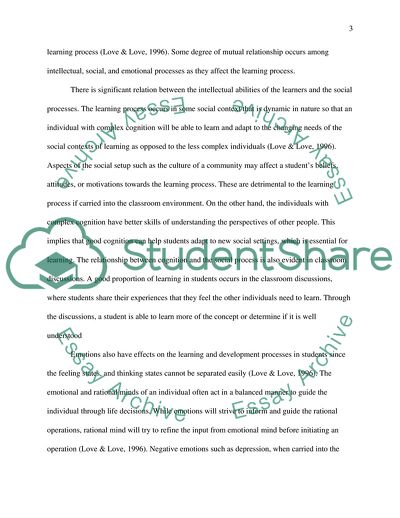Cite this document
(Language Acquisition and Various Influences on Student Learning Essay Example | Topics and Well Written Essays - 1500 words, n.d.)
Language Acquisition and Various Influences on Student Learning Essay Example | Topics and Well Written Essays - 1500 words. https://studentshare.org/education/1768998-language-acqusition-and-the-interrelatedness-of-social-emotional-and-intellectual-influences-on-student-learning
Language Acquisition and Various Influences on Student Learning Essay Example | Topics and Well Written Essays - 1500 words. https://studentshare.org/education/1768998-language-acqusition-and-the-interrelatedness-of-social-emotional-and-intellectual-influences-on-student-learning
(Language Acquisition and Various Influences on Student Learning Essay Example | Topics and Well Written Essays - 1500 Words)
Language Acquisition and Various Influences on Student Learning Essay Example | Topics and Well Written Essays - 1500 Words. https://studentshare.org/education/1768998-language-acqusition-and-the-interrelatedness-of-social-emotional-and-intellectual-influences-on-student-learning.
Language Acquisition and Various Influences on Student Learning Essay Example | Topics and Well Written Essays - 1500 Words. https://studentshare.org/education/1768998-language-acqusition-and-the-interrelatedness-of-social-emotional-and-intellectual-influences-on-student-learning.
“Language Acquisition and Various Influences on Student Learning Essay Example | Topics and Well Written Essays - 1500 Words”. https://studentshare.org/education/1768998-language-acqusition-and-the-interrelatedness-of-social-emotional-and-intellectual-influences-on-student-learning.


